The Case For Omer Yurtseven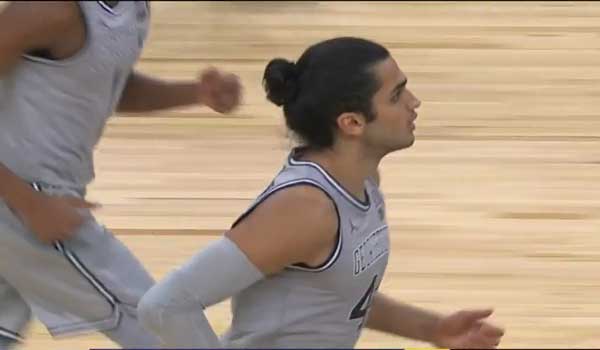
The NBA Draft is not until November 18, but former Georgetown center Omer Yurtseven (C'20) wants to be on that list."When teams ask about the overall progress that I've made, I have to mention that when I was 15 I played against OKC, at 17 I played against the Nets, I played against the Spurs, all the little milestones that led to college, then brought me here," Yurtseven told the Washington Post following a virtual visit with the Washington Wizards.Yurtseven narrowly missed becoming only the fourth Georgetown player ever to average 10 or more points and 10 or more rebounds in a career in his one year at the Hilltop. He opted not to pursue a redshirt senior season to be available for the draft, and is ranked 53rd at NBADraft.net, which places him near the end of the second round. A Georgetown player has not been drafted since Otto Porter in 2013. Georgetown Out of Wooden Legacy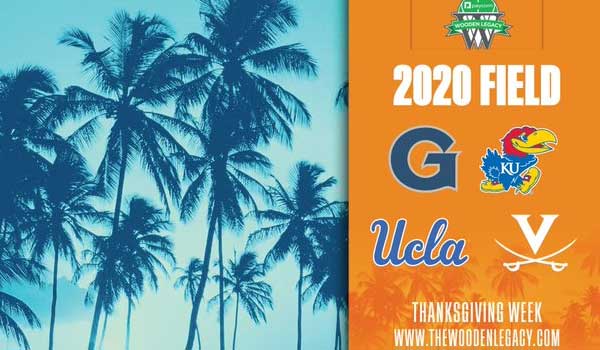
CBS Sports reported Wednesday that Georgetown will drop out of the four team Wooden Classic, scheduled for Nov. 25. This was confirmed in a tweet from reporter Eamonn Brennan on Friday:The multi-team Wooden Legacy event was scheduled for Anaheim, CA on Nov. 26-28 and include UCLA, Virginia and Kansas. UCLA has not committed to any fall sports and the event was reported to be moving to Orlando, FL due to ESPN Events moving its tournaments to Orlando. However, travel from Florida back to DC would be subject to a 14 day quarantine according to DC law. Ewing is more optimistic on a Dec. 5 home game with West Virginia as part of the Big East-Big 12 series. Travel from West Virginia, however, is one of 33 states which DC requires a 14 day quarantine, and absent a change on DC quarantine rules, would make a trip from Morgantown infeasible. Georgetown's early December game at Syracuse is also at risk, according to the Syracuse Post-Standard. Last week, Syracuse coach Jim Boeheim remarked that "Right now we have zero games," and that New York state quarantine rules may prevent any opponents beyond a bus trip to the campus. John Thompson Documentary In Production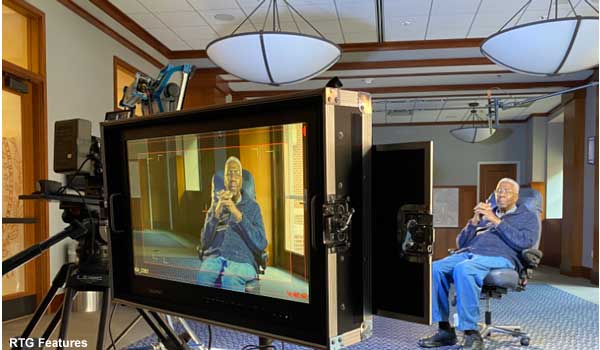
A documentary featuring one of John Thompson's last public interviews has been announced.The project is funded by RTG Features, a start-up company whose president is entrepreneur Matt Aronson (C'15)."As a Georgetown alumnus, I couldn't be more excited for our team to get behind this project," said Aronson at Deadline. "It represents exactly the kind of high-quality storytelling we want to finance and develop at RTG Features." Producers include ESPN film maker Kirk Fraser, Jimmy Jenkins, and Ronny Thompson (C'92), who maintains an undisclosed role with the program. Jersey Numbers (Maybe)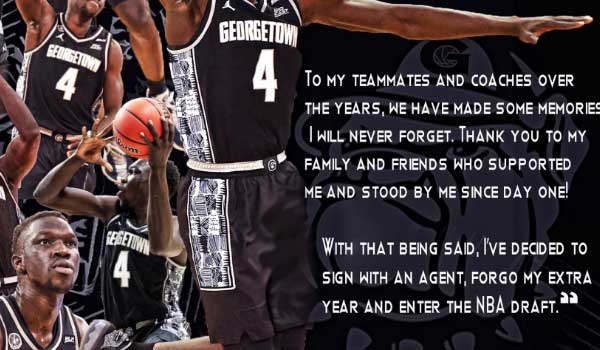
With Georgetown as the only Big East school that has not posted its 2020-21 roster online, its social media channels have been teasing jersey numbers for the eight newcomers, the largest one year change to the roster in 62 years.Barring any changes, the numbers presented are as follows:
HOYA Column on John Thompson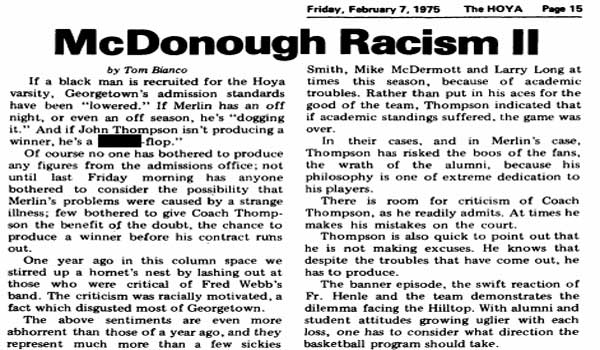
Coverage from The HOYA on the death of John Thompson was late and, in many ways, incomplete. To be fair, perhaps, today's students have no memory of his tenure as coach and many probably never saw him across campus in their respective years on the Hilltop. A column from someone who was there offers a better perspective.Tom Bianco (B'77) was a sports writer for The HOYA in 1975, co-wrote a column supporting Thompson in the aftermath of an incident before the Feb. 5, 1975 game against Division III Dickinson College. Thompson's response to Bianco is remembered in this column in the Sep. 18 virtual issue of the newspaper."It may seem strange that I wrote these pieces 44 years ago, and we are still grappling with issues of race today," he writes. "Thanks to educators like Thompson, however, we are making continuous progress at Georgetown and in the country. Progress is messy and never at the pace we would desire. I am grateful to Thompson for making me a more empathic and better person by teaching me how to stand in another person's shoes." Big East Preview: Three Man Weave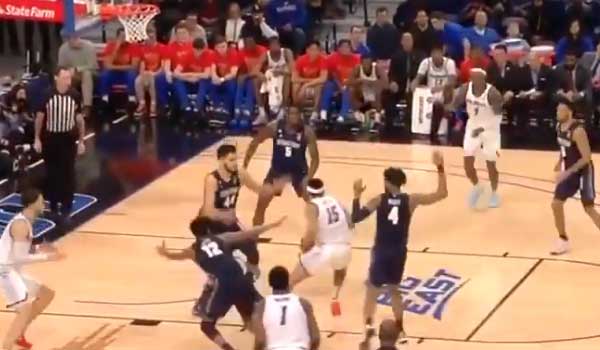
Another Big East preview online, this time from the Three Man Weave web site.The Picks:
2. Creighton 3. Providence 4. Seton Hall 5. Marquette 6. Connecticut 7. Xavier 8. Butler 9. St. John's 10. Georgetown 11. DePaul While defense should be the calling card of the 2020-21 squad, it's hard to see them improving so significantly over last year to warrant consideration for being ranked any higher than 10th heading into this season." Creighton junior Marcus Zegarowski was named as the pre-season player of the year. NCAA: Season Opener Reset To Nov. 25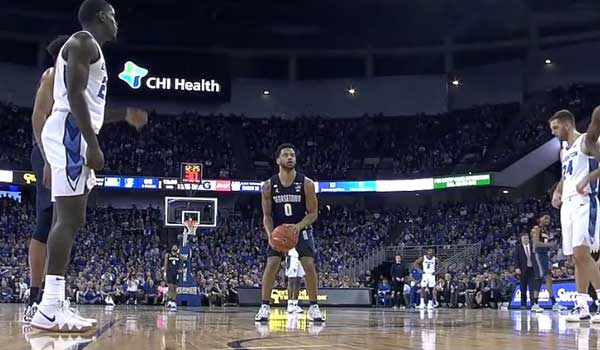
The NCAA Council has set a Nov. 25 start date to the 2020-21 season.The changes will reduce Georgetown's maximum regular season from 31 games to 27, inclusive of two games in the Wooden Legacy tournament, still on schedule for Thanksgiving weekend. The difference will likely cut as many as four home games off the traditional schedule.NCAA executive Dan Gavitt told CBS Sports.com that the Nov. 25 start date was chosen based on the likelihood of fewer students on campus after Thanksgiving across most colleges. "Now, the tough part: where and how the games are played, something that has already been discussed by leagues across the country but will have to be figured out in the coming weeks," writes the Norwalk (CT) Hour. "If the Big East, for example, wants to start its league season Jan. 1, UConn will have about six weeks to line up nonconference games. But if the league wants to begin, say, on Dec. 15, that changes how UConn could set up its non-league schedule. The Big East or other leagues may even want to begin their conference schedules at the start of the season. It's also possible leagues could expand their conference schedules. Currently, the Big East plays a 20-game slate, but that could be extended to 22, 24 games, etc." In other actions, the NCAA set Election Day as a holiday from all team practices and extended the "dead period" restricting personal recruiting to Jan. 1, 2021. Report: Wooden Legacy Heading East
Ahead of an NCAA vote Wednesday to set a start date for the 2020-21 season, columnist Adam Zagoria reports that ESPN is considering moving its eight early season tournaments, including the Wooden Legacy Classic, to Orlando.The Champions Classic, the Jimmy V Classic, Preseason NIT, Orlando Invitational, Myrtle Beach Invitational, Charleston Classic, Wooden Legacy, and Diamond Head Classic are all ESPN-managed events which would move to the bubble currently in use by the NBA, according to the report."Just like the NBA, they have access to all these hotel rooms and quality basketball venues," an unnamed spokesman told Zagoria. Relative to the Wooden Classic, there is the issue of UCLA. At present, the Pac-12 has shut down all sports for the fall semester, which would mean a new team may be required. Georgetown: #23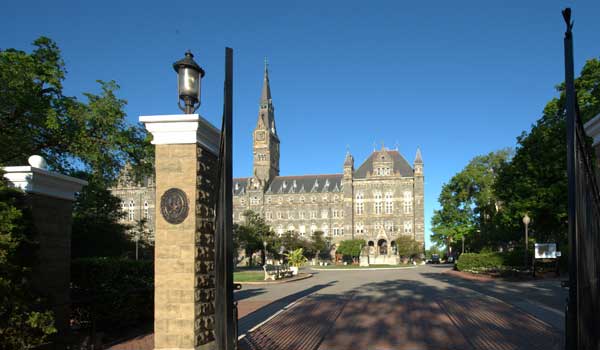
Georgetown University saw a move to #23 on the US News college rankings, which were released Sunday night.The overall ranking moved from #24 in 2019-20 to #23 for 2020-21.Georgetown scored highest in the following categories, according to the publication: #4 in International Business #7 in Best Colleges for Veterans #7 in Service Learning #8 in Study Abroad #12 in Best Undergraduate Teaching #19 in Co-ops/Internships #29 in Best Value #35 in Most Innovative Here are the 2019-20 Top 25 Rankings:
Among Big East schools, Villanova was #53, with Connecticut (#63) and Marquette (#88) as the only other Big East universities ranked nationally in the top 100. Other nationally classified schools include Creighton (#112), DePaul (#124), Seton Hall (#133), and St. John's (#170). Providence, Xavier, and Butler are all ranked in regional categories. Malcolm Wilson Named To NCAA Committee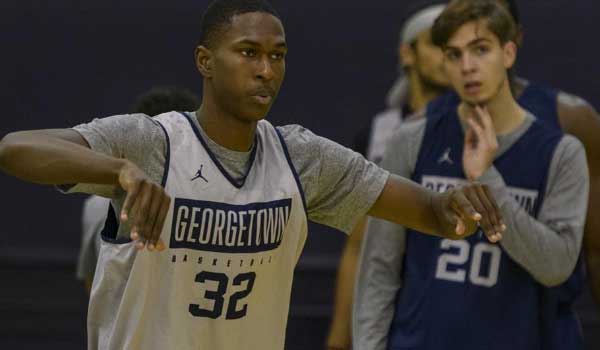
Sophomore center Malcolm Wilson (B'23) has been named to one of two at-large student positions on the NCAA Division I Men's Basketball Oversight Committee."Serving on the [committee] is a humbling and tremendous opportunity," said Wilson, a finance major in the McDonough School of Business. "I take this opportunity very seriously and will commit myself to being the best representative as possible for my teammates, the Big East Conference and all NCAA student-athletes."Per a story at WACH-TV, "the committee's role is to ensure that appropriate oversight of men's basketball is maintained, will enhance the development and public perception of the sport and make recommendations related to regular-season and postseason men's basketball." Moving In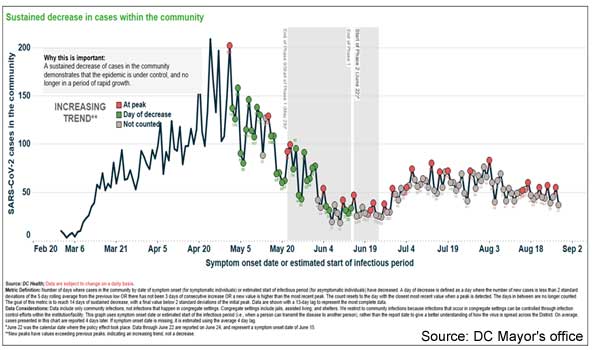
The Georgetown's men's and women's basketball teams are returning to campus today, per a report in the Georgetown Voice."The decision to return to campus is at the discretion of each student athlete and all scholarships will be honored regardless of their decision," a unnamed University spokesperson told the paper.In addition, "according to emails obtained by the Voice, campus apartments in Alumni Square [Village B] have been reserved for players since the start of the semester. Before the upcoming return was solidified, other students living in those apartments were asked to relocate to alternate housing on campus." Georgetown was the only Big East school whose players had not yet returned to campus. Practice time remain off limits due to an existing order from the DC mayor's office and a 14 day quarantine will be in effect for each arrival. John Thompson Funeral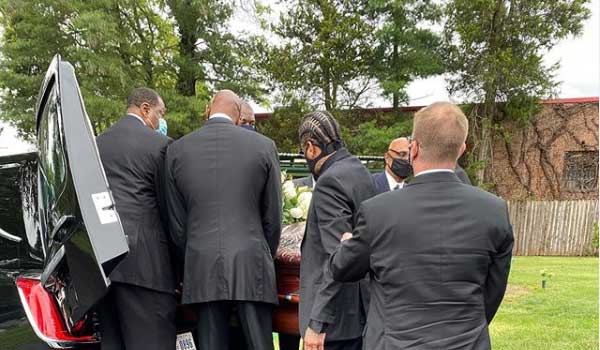
Funeral services for John Thompson were held today at historic St. Augustine Catholic Church in Northwest Washington.The services were restricted to family and close friends. Pallbearers included the four Basketball Hall of Famers who played under Coach Thompson: Patrick Ewing (C'85), Dikembe Mutombo (I'91), Alonzo Mourning (C'92), and Allen Iverson (ex-'98). The photo above was posted at Iverson's Instagram page, with the caption "See you when I get there coach..."Burial was private. Georgetown has announced a virtual memorial for Oct. 3 with a public ceremony on campus to follow in 2021 as conditions allow. Scheduling & Uncertainty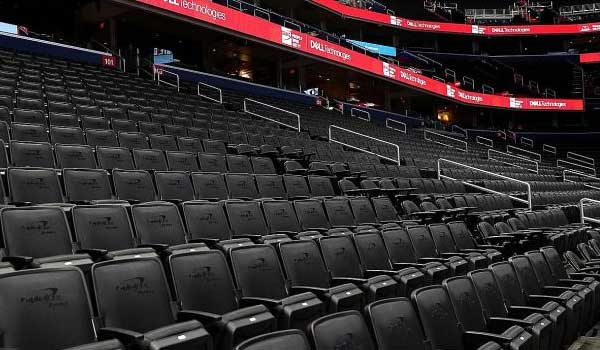
The is traditionally the week where Big East teams publicly announce its schedules, but don't expect it this week. As of September 1, just 18 of 357 Division I schools have finalized a schedule, and the same questions raised in the spring remain largely unanswered today.College basketball does not want a repeat of the scattershot approach of college football, where just 83 of 255 Division I schools are even playing, with schedules ranging from as little as one game and as others as many as 12. Add in the revenue losses from the 2020 NCAA tournament and the impact of games without fans and/or TV, and there's no good answer for anyone with 60 days to go before what should be the start of basketball season.An NCAA committee has recommended a vote next week on a Nov. 25 start for the season, or a two week delay from the scheduled opening on or about Nov. 10. With many schools opting to end in-person instruction after Thanksgiving, this assumes a less crowded campus environment to host games. Georgetown would miss as many as five non-conference home games and open the John Wooden Legacy Classic (a tenuous tournament already given UCLA's ban on all sports through the end of the year) at the start. All the other contingencies, from who top play, where games would be held, dates and times, television schedules, even the viability of conference tournaments, can't begin to be finalized until the starting line is set. And depending on how current events change, some conferences could opt to withdraw for the season altogether. Multiply this uncertainty across three NCAA divisions and an equal number of women's programs, and there are literally 2,000 teams waiting for a decision. Until them, we wait. More Coaching ChangesThe year of COVID-19 continues to reshape the Georgetown coaching ranks, with the announcement of the resignation of the University's men's and women's tennis coach.A release from GUHoyas.com announced the departure of Courtney Dolehide for an external business opportunity. Dolehide, 28, was elevated to head coach in 2018 following the departure of Gordon Ernst, whose subsequent arrest and indictment as coach at the University of Rhode Island was back in the news this week, when an eighth Georgetown parent was indicted on bribery charges for paying Ernst $200,000 to recruit his daughter to the GU tennis team.Tennis is the third vacancy on the coaches roster this summer; baseball was filled last week but the track position remains open. Ewing: Moving Forward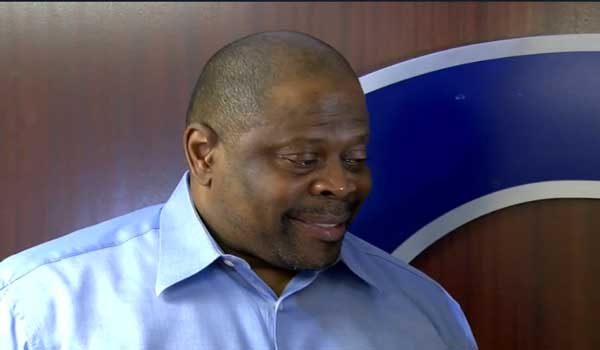
Head coach Patrick Ewing offered his first public comments following the death of John Thompson earlier this week."I was able to go over there the Friday before he passed," Ewing said in a video call. "We sat and talked and just laughed. I didn't know it was going to be good bye because I was planning to go back. Then I got the text late on Sunday that he had passed.""He has done a great job of teaching us not only to be great athletes but also great human beings. Now it's my role, my responsibility to keep doing those things to the kids I'm teaching." While McDonough Gymnasium and the Thompson Center remain empty, the coach's loss will be noticeable. Next week will mark the first time in 48 years without him.
Then & Now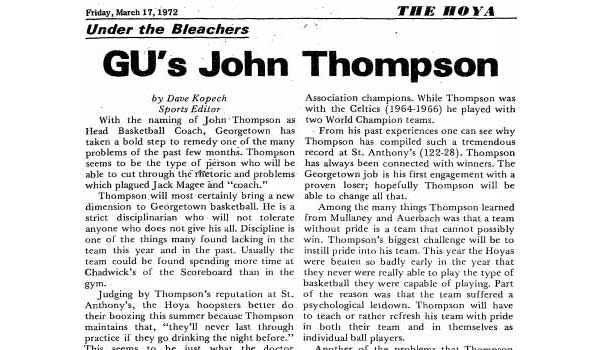
In 1972, students got their first look at John Thompson through a column in The HOYA by David Kopech (F'74) titled "GU's John Thompson". In a column submitted to HoyaSaxa.com, Kopech takes a looks back at the coach, then and now."In [that column], I welcomed him to Georgetown and hoped he would leave his mark," he writes. "I was a hopeful and impressionable college junior. Now I am a new grandfather who no longer sees life through starry eyes and youthful optimism. But despite the rigors of life, I am still the same person who looked up to a younger, less accomplished John Thompson. Only now I know how the story ended. Not with occasional trips to the NIT, not with just championships for Georgetown, and not with basketball glory. Because Big John's deflated basketball was a special icon, it signified all of the other great accomplishments of the man, his wealth of generosity, his brutal honesty, his belief in education, his enormous ability to teach not only his players but all of us about human decency and courage. I am proud to call him a friend and mentor and he will always be the most important person I met at Georgetown."Read David's thoughts (and a look back at that 1972 article) here. Georgetown's John ThompsonBy David Kopech SFS'74As the sports columnist for The HOYA and as an assistant Sports Information Director, I was one of the lucky ones who got to know Coach Thompson before he became the legend, the face of Georgetown Basketball and, lets face it, Georgetown's most famous non-alumnus. John was a quiet man who spoke softly until he got to know you. He was remarkable not just because he was wise and erudite, but because he listened. He encouraged me to ask questions, but also to answer his questions which were not about basketball, but life. He wanted to know about my background and when he heard that I grew up outside of Providence, where he attended college, we talked about his experiences as a student teacher and how he decided that his greatest wish was to be an educator of young people who did not have the advantages that he had to attend college on a four year athletic scholarship. Coach Thompson and I developed a relationship over the years. When I would see him at a Big East Championship or at the NCAA tournament or Final Four, he would always take a minute to ask how I was doing and since I had a brother who attended Georgetown, how he was doing. He would always remind me that I was there from the beginning and knew how difficult it was when not everyone at Georgetown was kind and when people complained that the Hoyas were "too black", "too undisciplined," "too rag tagged." Hoya Paranoia, some called it, but if you were there when the sign was raised in McDonough, you knew that paranoia was an unfair label. If you were there when the signs questioning Patrick's reading ability and heredity, or AI's battle to overcome his wrongful imprisonment, you knew that John had to face enormous hurdles to become the first African American to coach an NCAA basketball champion team, a designation which he abhorred because while he acknowledged his race and the hardships he had to overcome because he was black, he did not think it mattered. He did not become the coach and legend because he was black, he reached those goals despite being black in a racist white America. He was a strong black man who was thoughtful and kind. He was controversial but only because he needed to be in order to point out injustice and wrongs perpetrated by thoughtlessness and ignorance. And he was a great educator, not just of young people but of all people. His players' graduation rate was mind-boggling when one stops and thinks of how many great athletes he coached who were required to attend class regardless of their athletic talent and still stayed for four years and graduated even when they could have left school and made millions in the NBA. They stayed because that was the commitment they made to Coach and that was Coach's commitment to them. If they needed a reminder, it was always on the Coach's desk, the deflated basketball, because when basketball was over, one still must survive, succeed and take care of family and commitments. Big John did not just teach court sense, he taught common sense. This is not the first time I wrote about "Georgetown's John Thompson." When he was hired, I wrote a column in The HOYA with the same title. In it, I welcomed him to Georgetown and hoped he would leave his mark. I was a hopeful and impressionable college junior. Now I am a new grandfather who no longer sees life through starry eyes and youthful optimism. But despite the rigors of life, I am still the same person who looked up to a younger, less accomplished John Thompson. Only now I know how the story ended. Not with occasional trips to the NIT, not with just championships for Georgetown, and not with basketball glory. Because Big John's deflated basketball was a special icon, it signified all of the other great accomplishments of the man, his wealth of generosity, his brutal honesty, his belief in education, his enormous ability to teach not only his players but all of us about human decency and courage. I am proud to call him a friend and mentor and he will always be the most important person I met at Georgetown. 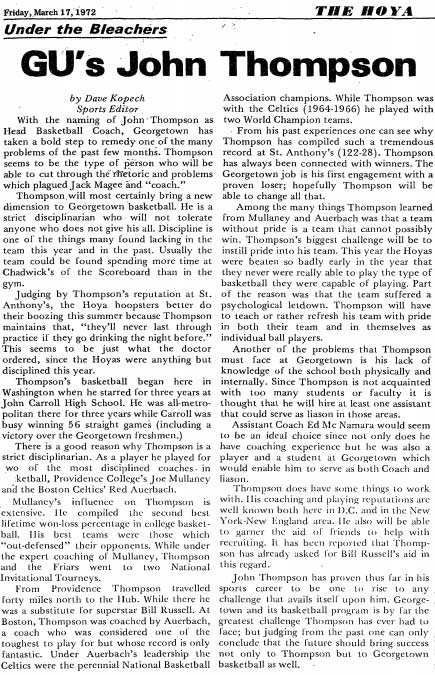 Editorial: The Lion Of Georgetown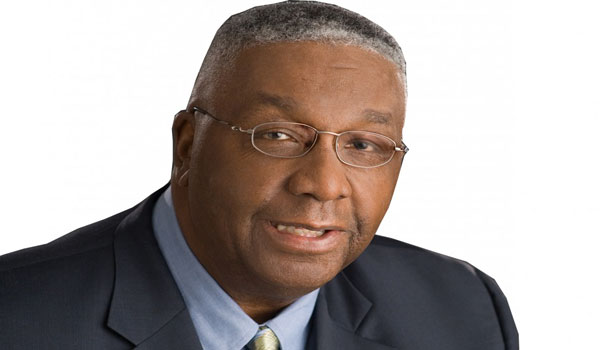
Today would have been John Thompson's 79th birthday. A life well lived, ended too soon, as they always seem to do. But what a life."John Thompson grew up in Washington in the 1940's and 1950's in a family struggling to keep above poverty," wrote noted author Roland Lazenby in 1984. "His parents were people of rare character. They looked beyond the hopelessness of their own lives to see their children's bright futures. John Thompson Sr. arose early each morning to work for low pay at a tile factory while his wife, Anna, did domestic work, washing and cleaning, and ironing, in white households. The family lived in a segregated public housing project in Anacostia. It could have been the place where John Thompson learned all the wrong things in life. But his parents were too loving, too supportive of their children, too steeped in traditional values and faith, to let that happen."So many people were a part of this life and this story: Sametta Jackson and Jabbo Kenner, Kermit Trigg and Bob Dwyer, Dave Gavitt and Joe Mullaney, and on and on. John arrived at Georgetown at the age of 30 where his values and faith would find a fertile ground to reshape a conversation about athletics, academics, and society that the University had ignored for decades. For Georgetown, a school which had rejected Thompson as a student just 12 years earlier, which did not admit an African-American to the College until 1963, and fielded an all-white basketball team as late as 1970, things were about to change. "When I was hired, I had a talk with the [Georgetown] president," Thompson told Sports Illustrated in 1980. "All that Father Henle said about basketball was that he hoped I could take a team to the NIT every now and then. I thought to myself that I'd eat my hat if I couldn't do better than that. But I didn't say anything except, Yes, sir, I'll try, because you don't want to set yourself up." John Thompson had bigger plans than just basketball, and Georgetown (and the nation as a whole), are the better for it. * * *
In a different time, a different era, coaches of renown were given great spectacles of public mourning. Fifty years ago tomorrow, Vince Lombardi died at Georgetown University Hospital at the age of 57. Four days later, his funeral filled St. Patrick's Cathedral in New York and a crowd of 1,500 waited outside to say their personal good bye. Six survivors of Fordham's "Seven Blocks of Granite" were there. So were coaches from West Point, 74 members of the Green Bay Packers team and staff who chartered a plane to be there, and six NFL coaches, including Tom Landry, who not only coached against Lombardi for a decade, but coached alongside him with the New York Giants teams of the 1950's. Three former players -- Bart Starr, Paul Hornung, and Willie Davis -- served among the six pallbearers. In his eulogy, Cardinal Terence Cooke noted that "How important it is for us to teach these virtues by our example, as Vince Lombardi did, to the youth of today who are the men and women of the future. Vince Lombardi was not only a sports celebrity, a great football coach marked for the Hall of Fame. What is ultimately more important than all else is that he was a man of deep faith, and firm hope." If something as elaborate had been proposed to John Thompson for this, he would probably dismiss it outright. "Too much fussing," he might say. But funerals, by their nature, are as much for those that depart as those that remain, and it is a tragedy of our times that our good-byes to John Thompson must be at a distance, and in many ways, incomplete. The outpouring of well wishes and warm memories have come across the news--we read the tributes when it's a former Big East coach or a Hall of Famer, but let us not miss those thoughts from those who met him in ordinary times and remember his extraordinary nature. I'm thinking of all the people John loved to start a conversation with: a bus driver here, a late night fry cook over there, or some retiree that happened to be sitting next to him playing a slot machine in Las Vegas, where the relaxation was always more important to the coach than the lure of any prize money. Because John Thompson was more than a coach or someone who made a lot of money, he asked questions that weren't so comfortable. He got people to think. Better yet, he wasn't afraid to listen, too. No matter if you met John Thompson once or knew him for 60 years, you remembered him. John liked to joke that he knew only two languages, "English and profanity", but in he got his point across--with a purpose and not just to pontificate. At the end of the day, you couldn't help but feel that you learned something, in either language. * * *
Far from the Twitter world, an online guest book was posted this week for those to offer thoughts. While I will keep the names private for this page, three comments speak for many."Dear John Thompson Family," one reads. "My thoughts and prayers are with you at his time. I wish you comfort in the strength and love Coach Thompson gave to you and others. Coach Thompson and my father were close friends in brotherhood, for a lifetime. I will be forever grateful to be invited by your dad to spend the last day on the air of his John Thompson sports talk radio show. I will always remember that special day, and when my father passed, your father sharing stories about my dad being his mentor and best friend, over the airways. May our joys be greater, our love be deeper and our lives be fuller from the joy of sharing lives with our dear fathers. May we carry on the light of what our fathers taught to other young people, for generations to come." From a second entry: "Thank you for all you did for my family. As a white mom raising an adopted black child I made sure my son followed your example of being tough but fair, giving young men chances they might not have had, and making sure each and everyone of them had a chance to get a good education. My son is a teacher in Boston now and is a Hoya for life. Rest In Peace sir, and know you were loved and respected by many." Finally, this one: "A mentor, a friend, my hero." For us, for now, no great public ceremony awaits John Thompson, who must surely be sharing a few laughs with Frank Rienzo at one side of the celestial table, and Tim Healy on the other, with Mary Fenlon keeping things orderly. John's passing comes four months before his autobiography would have surely been a national conversation, and in his absence, maybe that's the way he would have wanted it. A conversation, not a story. "His motivation is to give his family, particularly his grandchildren and great grandchildren, a chance to "know what Papi's about," he said," in a June story in the Washington Post announcing the book, in progress for nearly three years. "He doesn't want them to know him merely as the statue, or as Thompson called it 'the great big idol with the golden head.' He wants them to understand why he challenged the norm, the obstacles he overcame and what basketball provided him as a player and coach. He wants them to feel his connection to the D.C. area. He wants them to know his flaws. And yes, selfishly, he wants this opportunity to tell his side of his entire story." John Thompson was always about respect--respect he earned, and respect he gave. "I will take suggestions from people I respect," he said in 1984, "but it's true that I completely ignore the people I don't respect." For those he did respect, these were bonds that did not break. One of these was his mentor and friend, University of North Carolina coach Dean Smith. When Smith retired at UNC, he personally invited John Thompson to the event. When Thompson was inducted into the Basketball Hall of Fame, he sat Dean Smith in the front row. It was John that would call Dean at all hours for conversations about life; presumably, the only time each of them had that wasn't work related. "When the phone rang at 1 a.m.," Smith said of Thompson, "both of our wives knew who was on the other end of the line." Dean Smith died in 2015 from a progressive neurological disorder that led to memory loss. John Thompson was invited to speak at Smith's memorial service, the only speaker outside the Carolina basketball family asked to do so. The contemporary reports indicated that Thompson was not able to attend, and perhaps he just didn't want to express his grief in such a public forum before 7,000 people. But ten days earlier, at the private funeral at the Binkley Memorial Baptist Church, someone was there. "I'll never forget at Coach Smith's funeral, Coach Thompson arrived two hours early and sat quietly by himself in a pew." said North Carolina coach Roy Williams. "Even though he wasn't in great health at the time, it was important for him to be here for the service, just as it was when Coach Smith retired and Coach Thompson came to Chapel Hill for the press conference. He would check in on Coach Smith, which meant so much to Coach Smith's family and all of us who knew and loved him." * * *
2020 gives us precious little time and no extended way to say goodbye to this lion of Georgetown, who was an educator in very sense of the word. He never got a halftime salute from decades of former players as Dean Smith and Bob Knight received, though John probably wouldn't have wanted it, anyway. He will not get the grand ceremony due a great figure; if not for him, then for those who continue without him."Our father was an inspiration to many and devoted his life to developing young people not simply on, but most importantly, off the basketball court," read a statement from the family. "However, for us, his greatest legacy remains as a father, grandfather, uncle, and friend. More than a coach, he was our foundation. More than a legend, he was the voice in our ear every day. We will miss him but are grounded in the assurance that we carry his faith and determination in us. We will cherish forever his strength, courage, wisdom and boldness, as well as his unfailing love." Within a few days, John Thompson will be buried, but not forgotten. And perhaps, in a healthier and happier world to come, Georgetown could mark its collective calendars for Thursday, September 2, 2021, and book McDonough Gymnasium for a night of recollection, remembrance, and ultimately, respect for John Thompson on the 80th anniversary of his birth. A year late, perhaps, but no less deserving. Until then, ave atque vale, hail and farewell. --JR Georgetown Baseball Names Head Coach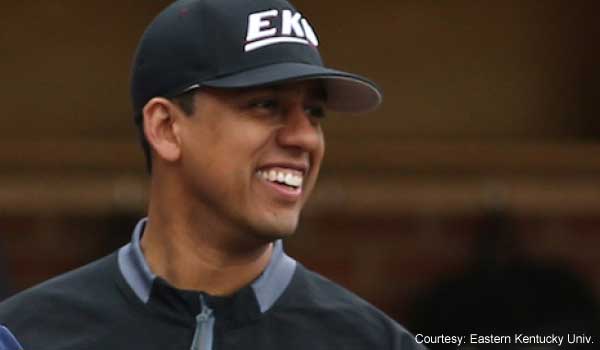
As one Thompson departs, a new Thompson (no relation) has joined the Georgetown athletics family.Edwin Thompson was named head coach of the baseball program Tuesday, arriving to GU following five years at Eastern Kentucky."I could not be more excited to join the Georgetown Athletics family and the Georgetown community," Thompson said in a news release. "Georgetown represents a standard of academic and athletic excellence, which will be upheld by our coaches and players every day. I would like to thank Mr. Reed and [sport administrator] Dan Trump along with everyone involved in the interview process for this opportunity." Thompson, 40, is the first African-American to lead the baseball program at Georgetown, and just one of three black head coaches in all of Division I, where participation by African-Americans has fallen to just four percent of all players nationwide. This trend is also seen in the pros, where black players make up just 7.8% of Major League rosters in 2020, down from as many as 18 percent as late as 1986, and the same percentage as it was in 1958. The new coach, who played locally at Howard until the Bison dropped baseball in 2002, will attempt to secure Gerogetown's first winning season since 1986 when the next baseball season is resumed. Videos From Yesterday's News |